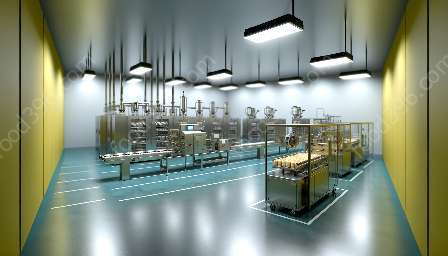Fermentation is a biological process that has been used for centuries to transform raw ingredients into various food products, contributing to both food preservation and unique flavors. In this article, we will explore the intricate world of fermentation, its significance in food preservation and processing, and its relationship with packaging technologies.
Understanding Fermentation
Fermentation is a metabolic process that involves the conversion of carbohydrates, such as sugars and starches, into alcohol or organic acids using microorganisms such as yeasts, bacteria, and molds. This process often occurs in the absence of oxygen and is commonly employed in the production of diverse food items like bread, cheese, yogurt, beer, and sauerkraut.
The Role of Fermentation in Food Preservation
One of the most remarkable aspects of fermentation is its ability to preserve food. Through the action of beneficial microorganisms, foods can be preserved for extended periods, mitigating the risk of spoilage and enhancing their nutritional value. The fermentation process creates an acidic environment, thereby inhibiting the growth of harmful bacteria, and in many cases, contributing to the development of unique flavors and textures.
Various traditional food items, such as kimchi, pickles, and salami, owe their long shelf lives and distinctive tastes to fermentation. The preservation of these foods is often achieved through the introduction of specific strains of lactic acid bacteria, which not only prevent the growth of spoilage organisms but also enhance the nutritional quality by breaking down complex nutrients into more digestible forms.
Fermentation and Food Processing
In addition to its role in food preservation, fermentation plays a pivotal role in food processing. The transformation of raw ingredients through fermentation can lead to the development of entirely new products with unique flavors, textures, and nutritional profiles. For instance, the fermentation of milk leads to the production of yogurt, kefir, and cheese, all of which have vastly different characteristics from the original raw material.
Similarly, the fermentation of grains and pulses gives rise to products like bread, miso, tempeh, and soy sauce, each with its own distinct taste and texture. The controlled application of fermentation in food processing allows manufacturers to create a myriad of innovative and appealing products that cater to diverse consumer preferences.
The Intersection of Packaging Technologies and Fermentation
While fermentation acts as a key element in food preservation and processing, its interaction with packaging technologies is equally crucial. The packaging of fermented products not only safeguards their integrity during storage and transportation but also plays a significant role in controlling the fermentation process itself.
For instance, the selection of packaging materials and technologies directly impacts the proliferation of microorganisms during fermentation. Permeable packaging may allow gases to escape, affecting the fermentation rate, while impermeable packaging can create an anaerobic environment, facilitating certain fermentation processes.
Furthermore, advancements in packaging technologies, such as modified atmosphere packaging (MAP) and active packaging, have enabled producers to extend the shelf life of fermented products while maintaining their quality. MAP involves the alteration of the gaseous environment surrounding the product, effectively slowing down unwanted microbial growth. On the other hand, active packaging integrates natural or chemical additives into the packaging material to actively intervene in the fermentation process, enhancing product safety and quality.
Enhancing Food Safety and Quality through Fermentation and Packaging
Combining the art of fermentation with sophisticated packaging technologies serves not only to expand the range of available fermented foods but also to optimize their safety and quality. The controlled conditions provided by innovative packaging solutions enable producers to offer high-quality fermented products with extended shelf lives, meeting consumer demands for convenience and freshness.
In conclusion, fermentation stands as a fundamental process in the world of food preservation and processing, driving the creation of diverse, unique, and nutritious food products. When complemented by advanced packaging technologies, the benefits of fermentation are amplified, resulting in safe, high-quality products that enthral consumers with their delicious flavors and extended shelf lives.

